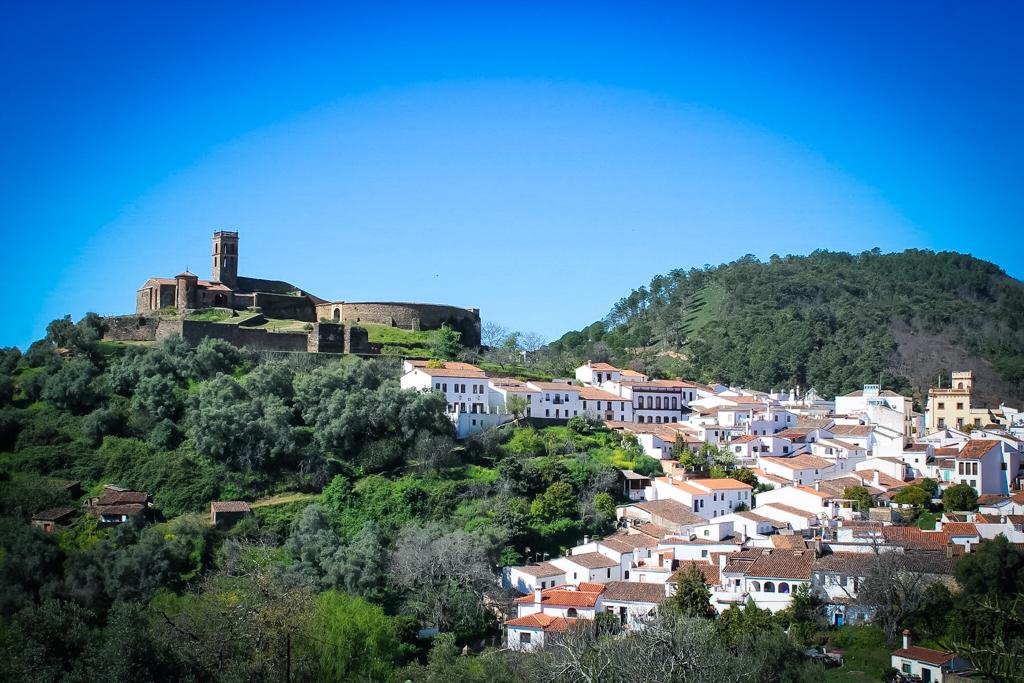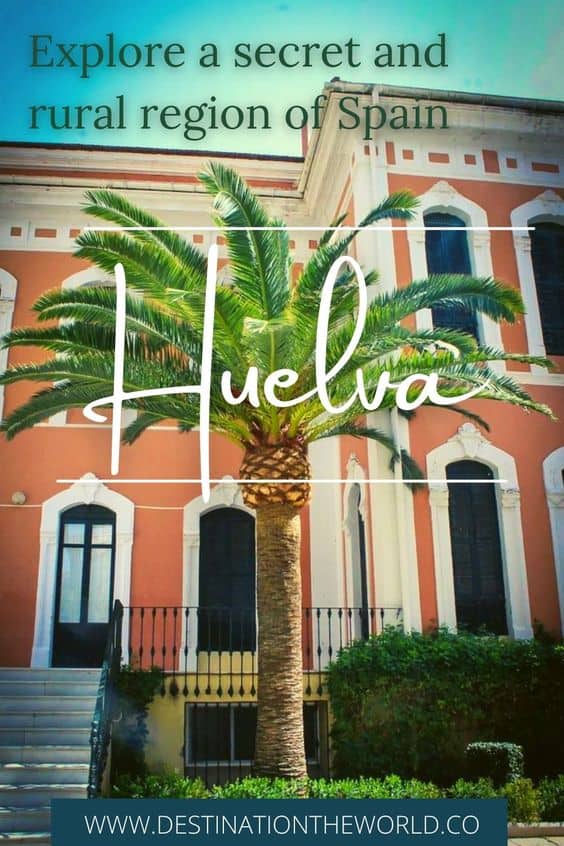This post may contain affiliate links, where we may receive a small commission if you purchase something through following the links at no extra cost to you.
Andalucia is one of the most interesting places to visit in Spain. More known places such as Granada, Seville, Cordoba and Malaga often top the traveller’s list. But there is more to Andalucia than that. If you are looking to visit rural Spain, Huelva province is just the perfect Spanish destination. Join us as we show you another side of the region. We present you with Huelva, Spain – an Andalucian destination off the beaten track for most travellers.
Huelva province is home to the famous Iberico ham and the starting point for the journeys of Christopher Columbus. Here you will find serene beaches, historic sites, national parks, green forests, a mountain range and picturesque, white villages. And then there is the seafood. Always fresh, and always made to perfection. In addition to tourism, fishing is an important part of the local economy, so access to the best Spanish seafood is never far away.
TIP: Don’t get confused about Huelva province and the city of Huelva. Both the province and the largest city in Huelva is called…you guessed it: Huelva
Huelva, Spain is not the most visited place in Andalucia. Tourism is a big industry but mostly depends on Spanish tourists spending their holiday at the long, wide beaches. Here, you will most likely not meet your neighbour, and you can have the feeling of being the only foreigner around.
Despite being a less-visited part of Andalucia, there are many great things to do in Huelva. Read on to reveal secret Spain and what it has to offer.
Content
Road trip in Spain to the White Villages of Huelva
Located in the northern part of the Huelva province is the Sierra de Aracena mountain range. They’re not the highest of mountains but with rounded mountains covered in lush green. This relatively large area has so much to offer, and one could easily spend days on end exploring it.
Most noteworthy are the White Villages of Huelva. The villages themselves are the biggest attraction here, and rightfully so. Located in the hillsides and the valleys in the mountains they almost look like a postcard, one more charming than the other.
Hiking is a common activity in the area. Because of several marked routes, hiking from one village to another is popular. If the hunger gets you after some hours, don’t fret. Several local restaurants are serving excellent Andalucian food. Above all, try the Iberico meat.
On our Spanish road trip we visited Huelvas White Villages in the order they are listed in this blog post. You can also drive in the opposite direction, as well as only visit one or two of the villages, and rather spend some time hiking or nature walks.
TIP: Read our post on Seville City Break – things to do in Seville, if you also plan a stop there
Almonaster la Real
Almonaster la Real, with a population of 1819 (2018), is proud to say that it has been voted one of the most beautiful villages in Spain. Certainly, the place is a sight for the eyes. Perched on a hilltop above the village is the Mezquita, a 10th-century mosque. It’s an inheritance from the Moorish rulers of Andalucia. Below the Mezquita lies the village with narrow streets, small squares, churches and cute white houses. Stop at one of the street-side cafes for a cortado, lemonade or a glass of local wine while you enjoy the atmosphere. Life here is relaxed, and wandering the streets is the biggest attraction itself.
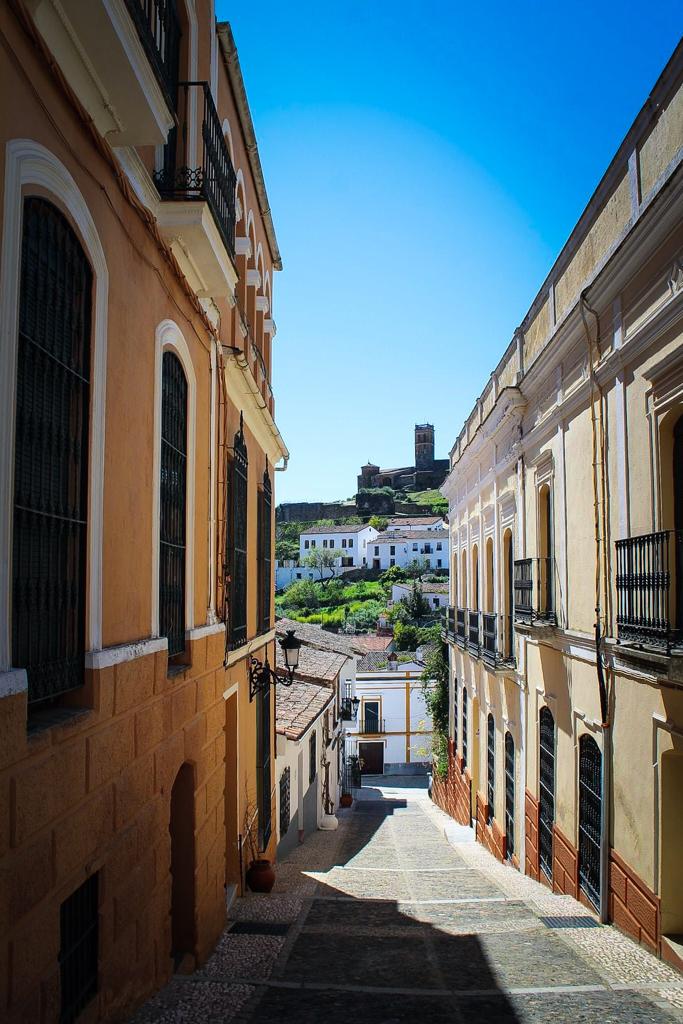
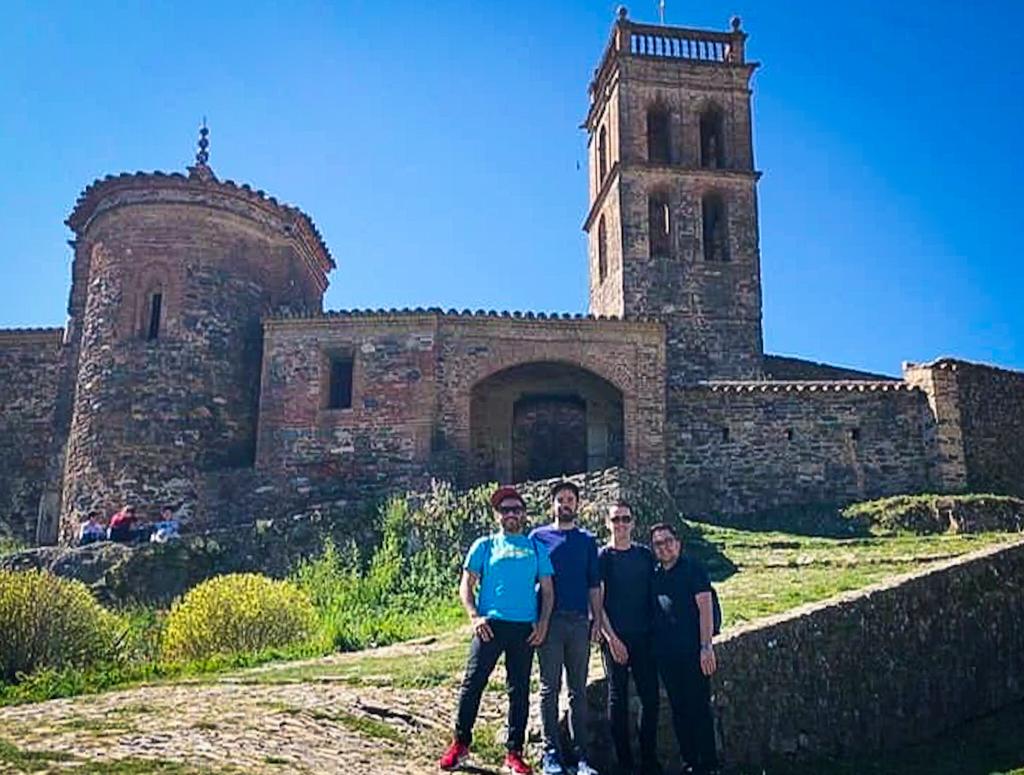

Alájar
The next stop on this road trip in Andalucia is the cute village of Alájar (population 763 in 2018). Also here you’ll find a local and authentic vibe in the narrow streets and lanes. The architecture is typical for the region, and the pace is low.
Perched on a hill above the village of Alájar, the La Pena de Aria Montano offers stunning views over the below village and the surrounding areas. Also, there is a nice chapel here. A bell gable on the edge of the plateau is a sought-after photo motif.
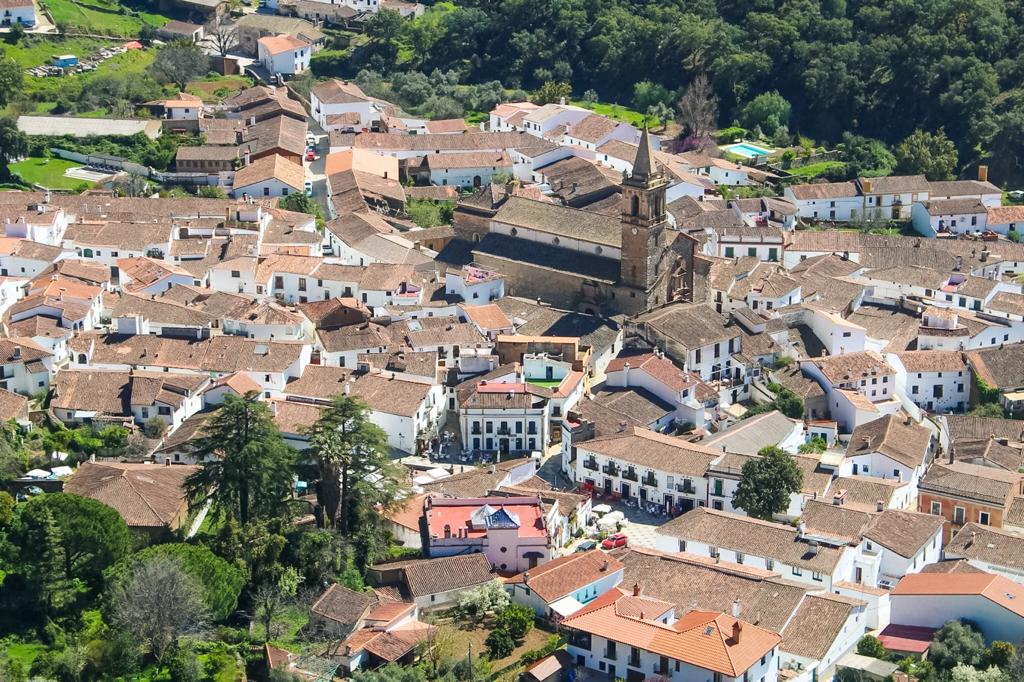

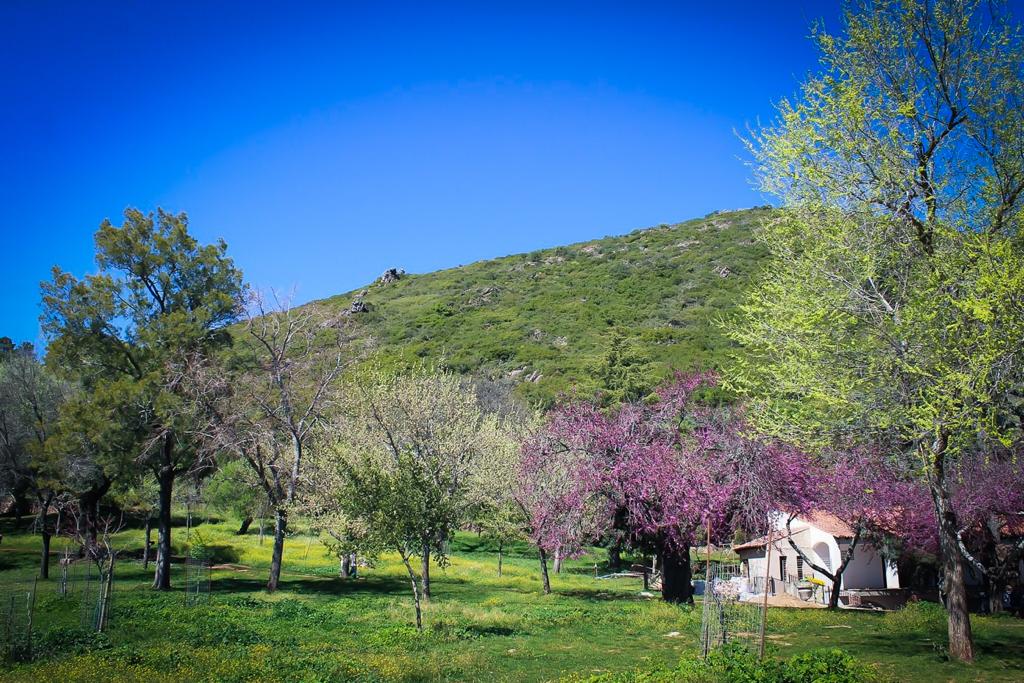
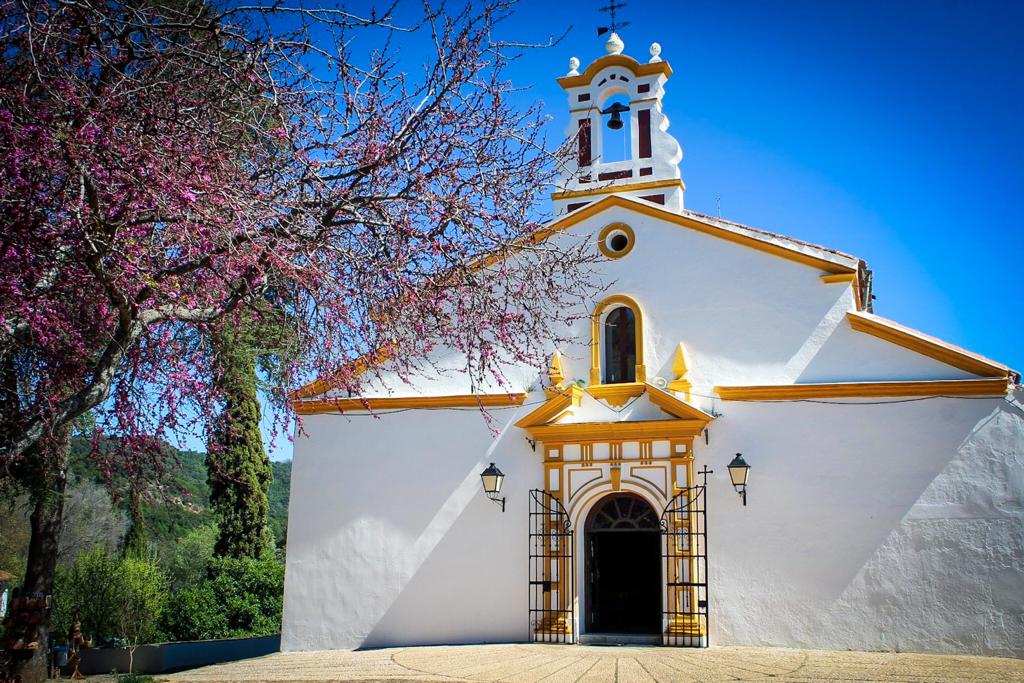

Linares de la Sierra
Linares de la Sierra (population 267 in 2017), is another of the white villages in Huelva. Linares is a very charming place, where also here the narrow streets and lanes are inviting for a stroll around. Once a bullfighting arena, the main square in the village today serves as home to several excellent restaurants serving traditional Andalucian food.
TIP: Here you are at home for the famous and delicious Iberico meat. All restaurants have different Iberico dishes on the menu. Try it!
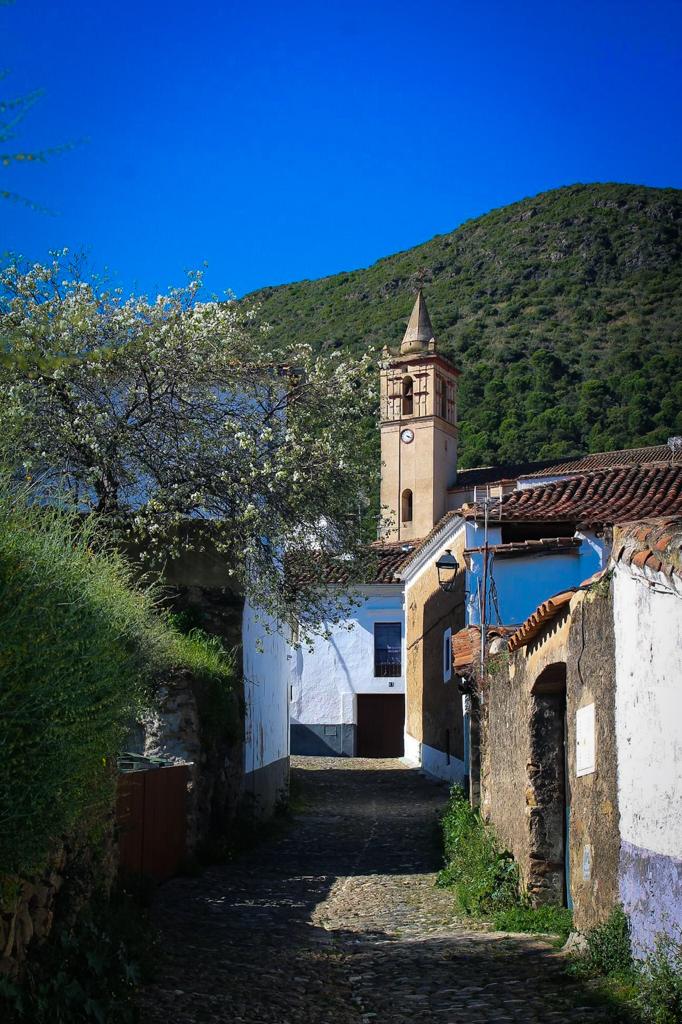
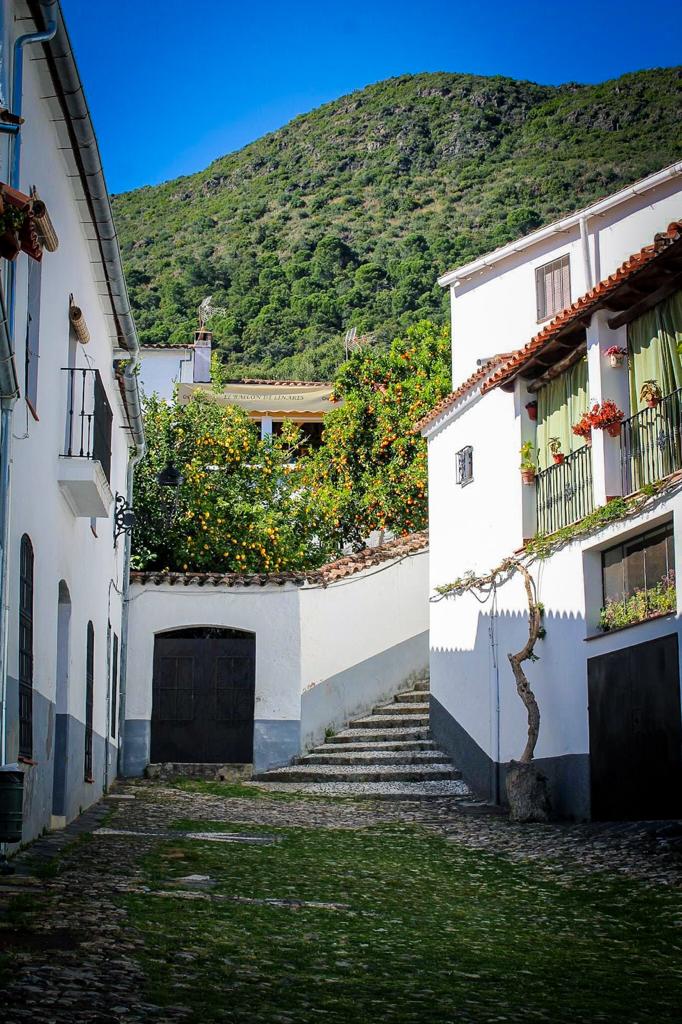
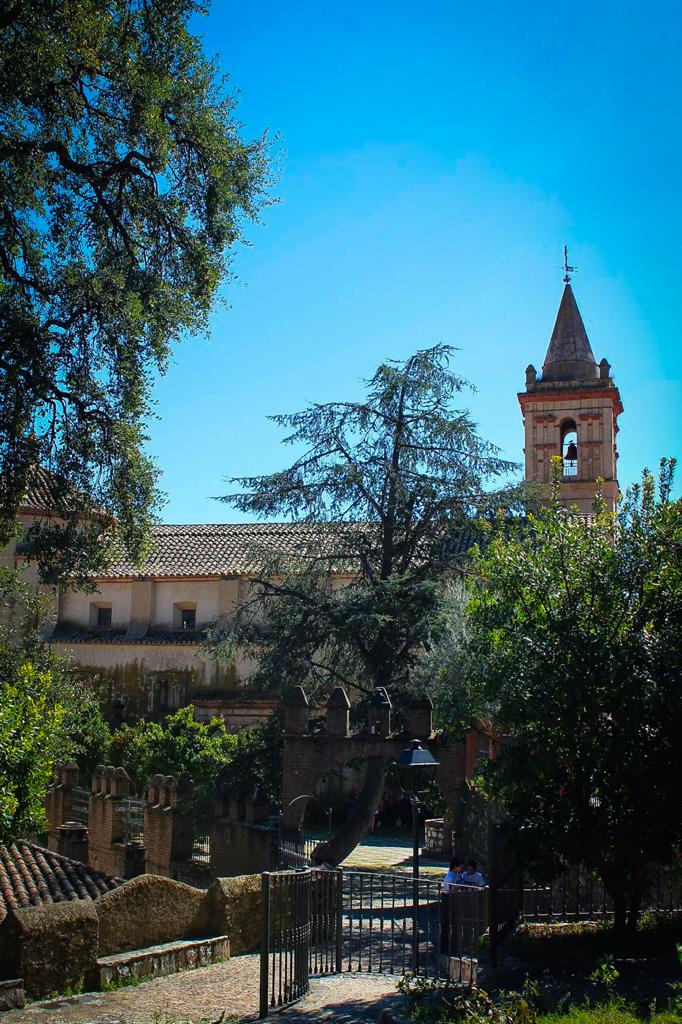
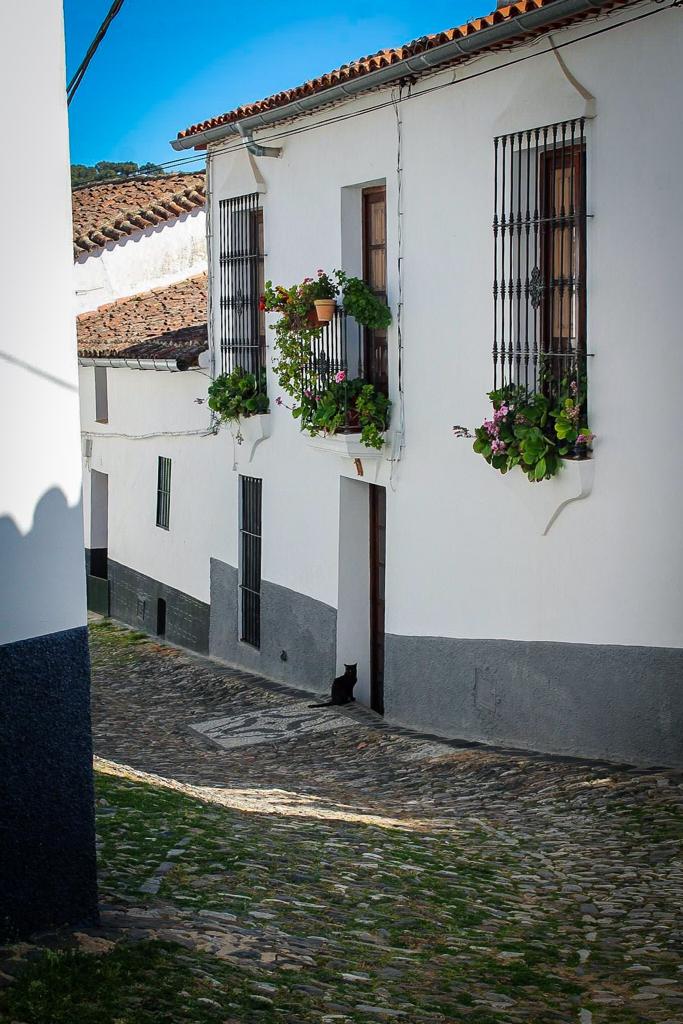
Aracena
Another 15-minute drive from Linares and you will arrive in Aracena. This is the largest town in the area, with a population of 8048 (2017). The town is more lively than the smaller villages but never feels crowded or hectic. In Aracena, you can find many nice shops, cafes and restaurants. On a hilltop above the city, you can also visit the citadel. After a stroll around, you might have worked up some appetite again. If you are in for sweets this is the place to be. Bakeries are a thing here, and they all serve the most delicious pastries.
TIP: In Aracena, you can buy pastry or cakes at any bakery, and then bring them to one of the nearby cafes. A local custom allows you this, as long as you purchase drinks at the cafe.
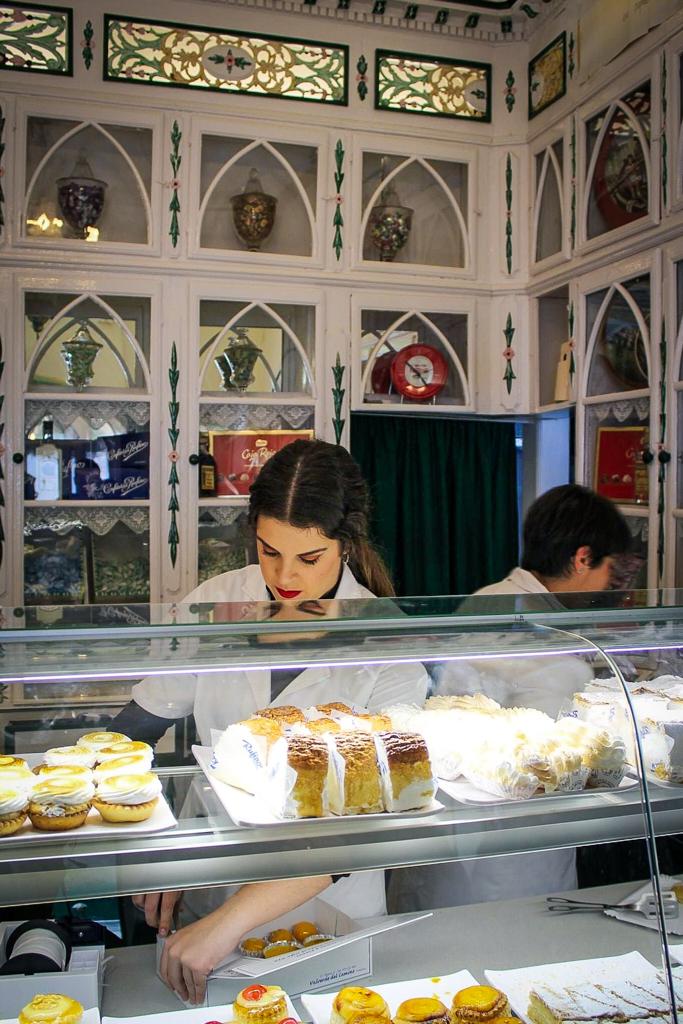

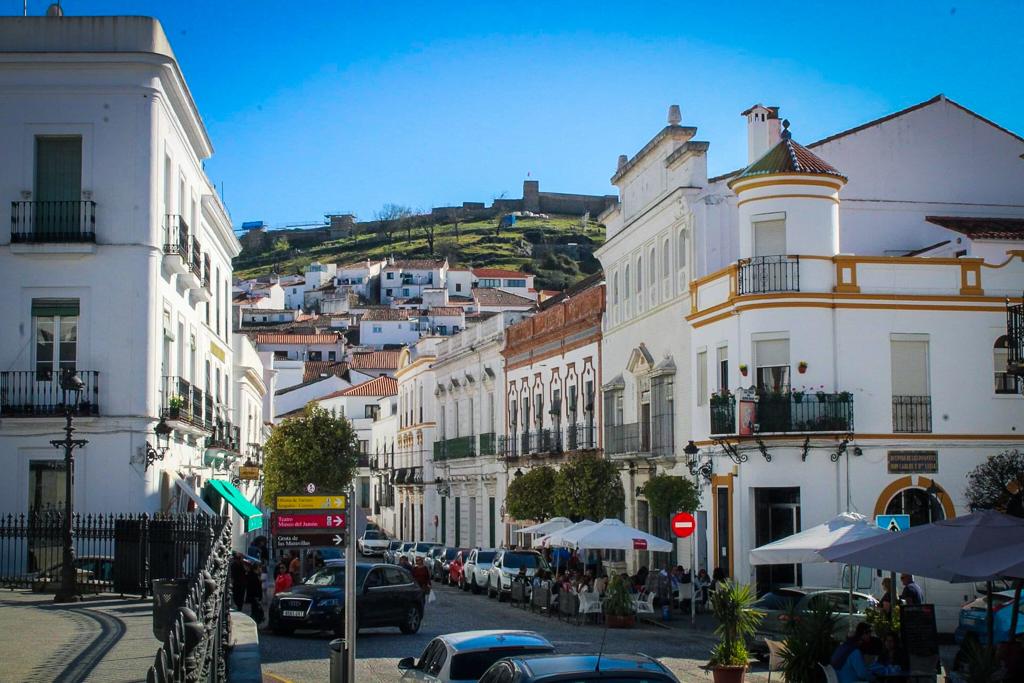
Before you go – How to visit the White Villages of Huelva
- You need a car for this trip. Public transport is very limited
- Distance from Huelva to Almonaster la Real: approx 100km/ 1,5h drive
- Distance from Aracena to Huelva: approx 100km/ 1h20min drive
- It’s cooler in the mountains. Bring an extra layer in spring and autumn
- Hiking routes between the villages are marked
City life in Punta Umbria and Huelva (city)
With few foreign visitors, the city of Huelva (population 145.000) and Punta Umbria (population 15.000) has an authentic vibe with a wide range of activities to offer.
TIP: This is Spain off the beaten path. Read this post on Barcelona off the beaten path if you are planning a trip there as well.
Punta Umbria’s main attraction is the beach. The long, sandy beach attracts thousands of tourists in the summer. Among Spanish tourists, the town is a popular beach holiday destination.
The town is surrounded by water on almost all sides, and a walk along the harbour is always a nice way to get a taste of the local Spanish life.
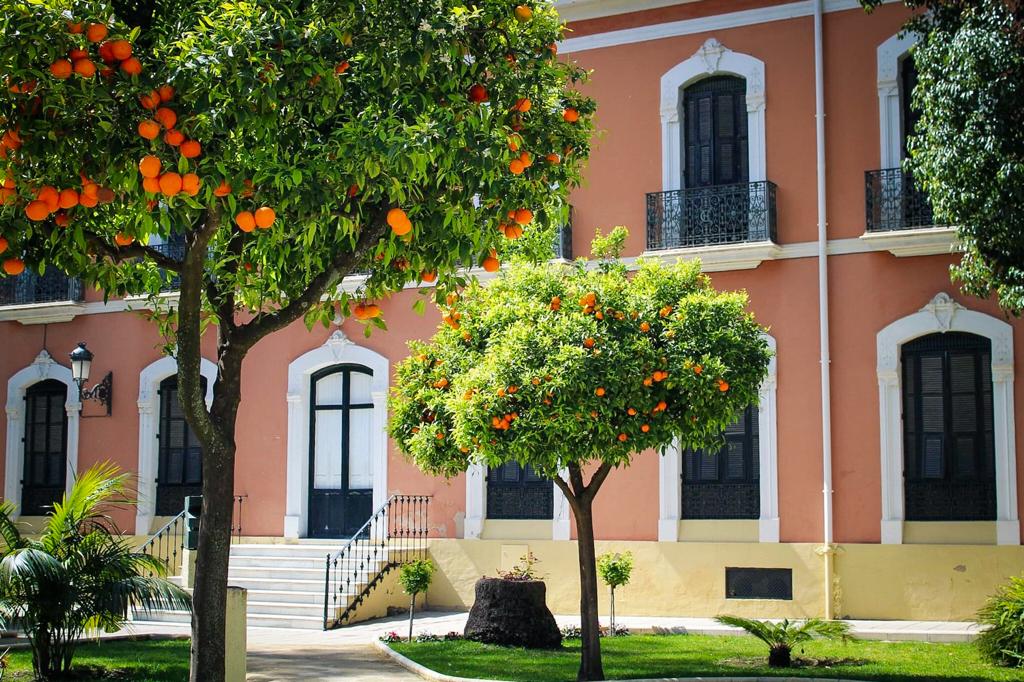
There are several cafes in the centre offering traditional Andalucian breakfast; baguette with tomato, olive oil and Iberico ham. Also, there is seafood. Lots of it! In Spain, Huelva is famous for its fresh, daily catch. Here you can find the best fish, mussels or squid. Everything is prepared to perfection at the many restaurants. For us, the freshness and simplicity of the cuisine made a seafood meal into a truly unique experience.
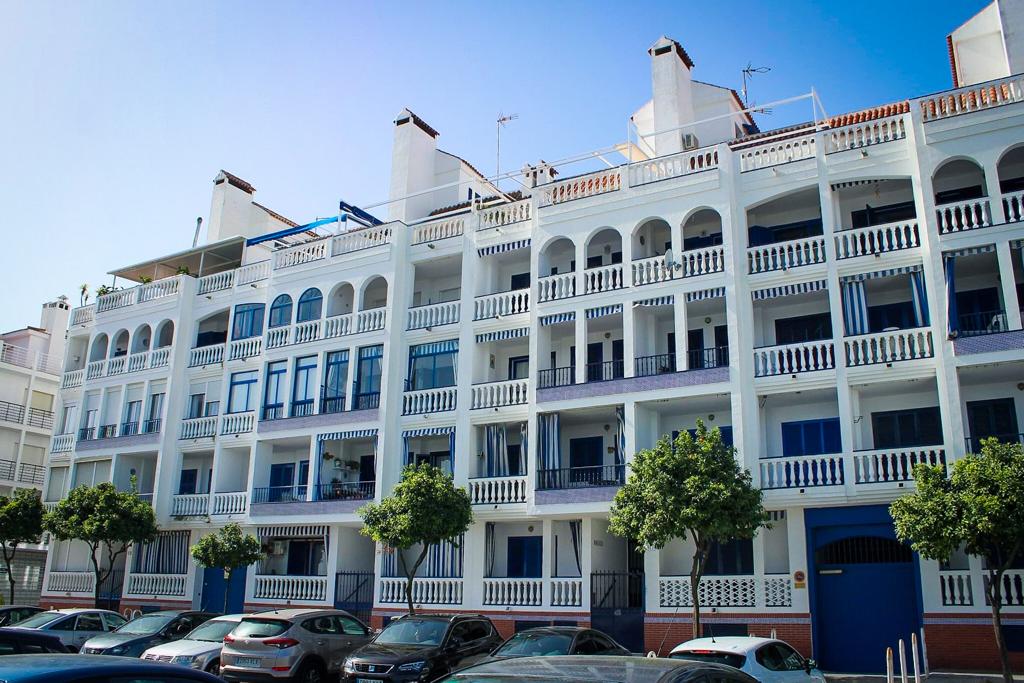
Huelva city is larger and has more to offer. The vibe is more lively, and the city centre is busier. The selection of shops, restaurants and cafes is good. You are never far away from a place if you need a refreshment or a bite. Did we mention seafood and Iberico meat?
Check out the mix of architecture and street art while you are in the city. There are several murals with really great artwork. Huelva Museum has an archaeological collection on one floor and a collection of fine art on the next. Along the river, you can walk the Muelle de Riotinto, a 19th-century pier open to pedestrians.
TIP: Read this post from Travelletters about Semana Santa in Malaga- the Holy Week Celebration if you plan to visit Andalucia for Easter
Close to downtown Huelva, you can visit the neighbourhood Barrio Reina Victoria. Built in 1916, the area consists of picturesque single-family homes, named in honour of Queen Victoria. The style is summarized as English, but it also combines Andalusian and colonial architecture. Each home here is different from the others.


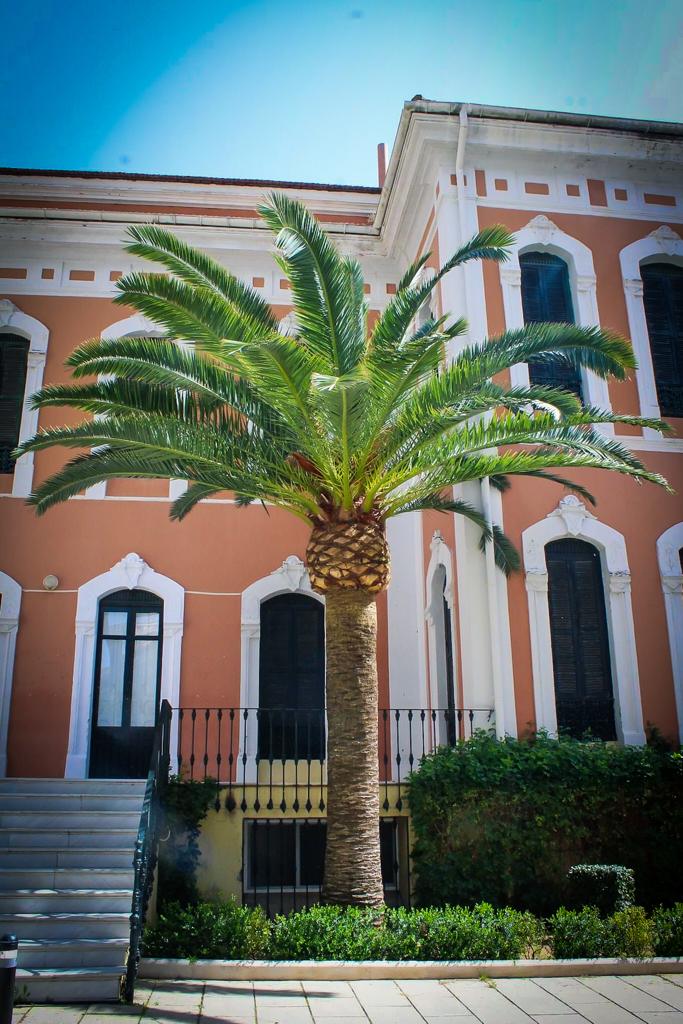
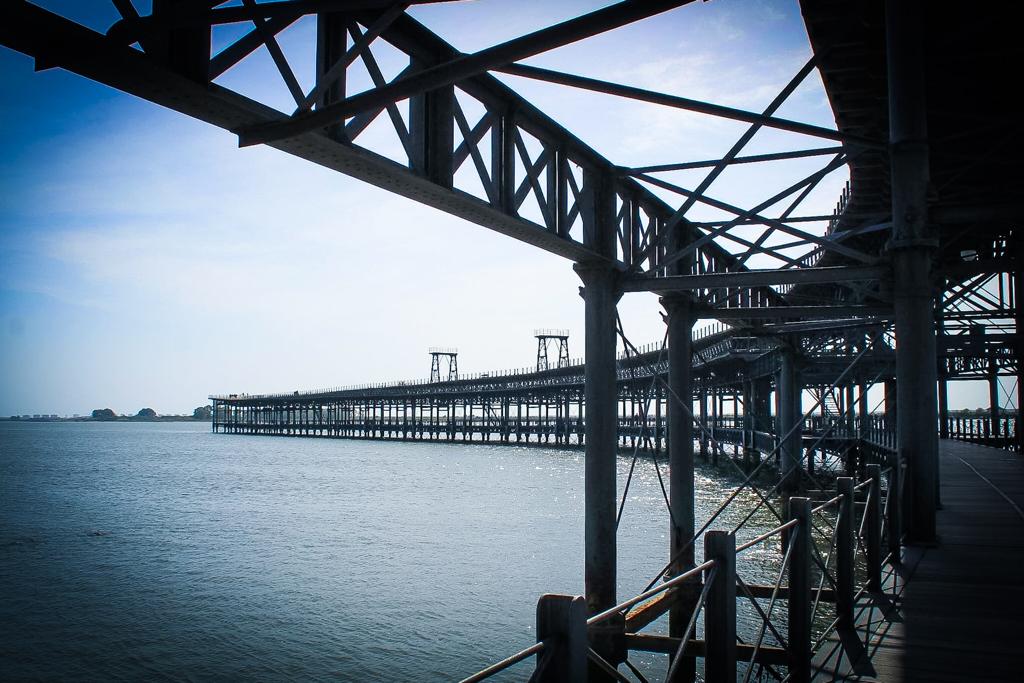
Huelva and the history of Christopher Columbus
The province of Huelva has an important historic value. Huelva is strongly connected to the later success and wealth of Spain. From here Christopher Columbus set sail with his three ships wanting to find a shorter route to India. As we know, he ended up discovering America.
Lugares Colombinos (Columbian places) is a tourist route that includes several places and stops with special relevance to the preparation and realization of the first voyage of Christopher Columbus.
An important stop on the route is La Rabida Monastery, a Franciscan monastery. It was here Columbus and his crew prayed the night before their departure. Close to the monastery is the Wharf of the Caravels, a museum with real-size replicas of the ships Columbus’s ships. A visit on board the ships is possible and will give you a brief idea of how life could have been as a seafarer back in the days.
TIP: Columbus’ first voyage was financed by Isabella I of Castille and Ferdinand II of Aragon. They first met in Cordoba. Read our post things to do in Cordoba – unique Spain tourist attractions where we also visit the place where the above meeting took place
From here, continue to the town of Palos de la Frontera. This town also plays an important role in history. From here Columbus sailed on the morning of 3 August 1492. To get the most out of your visit here, go in March if possible. At the time of our visit, there was is a huge medieval festival going on, as a remembrance of Columbus’ first return. Furthermore, the streets are decorated and filled with happy people. Some are dressed in costumes, there is music, dancing and there is food. Lot’s of food.
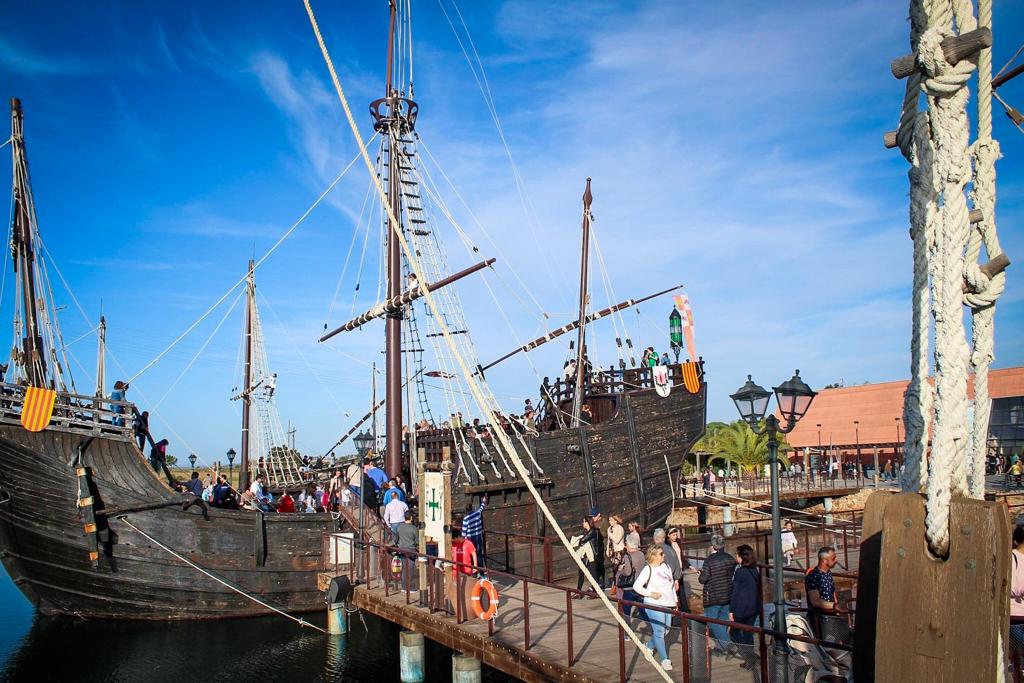
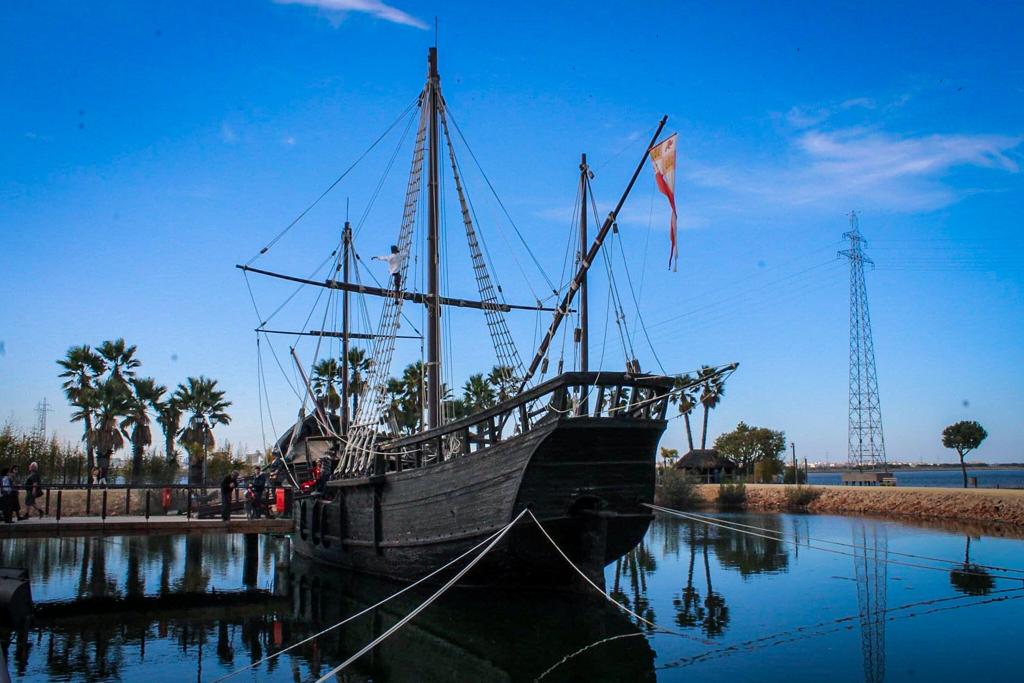

Best time to visit Huelva – Weather in Huelva
Huelva is a year-round destination, with comfortable temperatures in spring and autumn. Summers can get very warm, but with the sea breeze, it’s a better place to spend high summer than more inland in Andalucia. Furthermore, the season is long in this part of Spain. Therefore, you can enjoy the sun earlier or later in the year than in many other places along the coast. Don’t expect Mediterranean temperatures in the water in Huelva. Here you will swim in the Atlantic Ocean.
- In the winter (Dec-Feb) the mean temperature is 11-12 °C (51-53F)
- In high summer (Jul-Aug) the mean temperature is 24 °C (75F) but can reach 30 °C (86F) and above
- In spring and autumn, the mean temperature is comfortable 15-20 °C (59-68F)
Plan your trip: How to get to Huelva and around
To visit the Huelva province you can fly to e.g. Seville, Malaga, Jerez, or Faro in Portugal, with Seville and Faro being the closest airports. From Seville airport, you can travel directly to Huelva by bus, and from the city centre, you can take a bus or train. From the other airports, a rental car is the best option as public transport is time-consuming, but possible if you prefer, or have the time.
TIP: Read our post from Granada if you are looking for the ultimate city break in Spain
A car is the best way to get around in the Huelva province. Buses run between Huelva city and e.g. Punta Umbria. For a visit to the White Villages or Lugares Colombinos, a car is needed for the best experience. Driving is easy, and traffic is not too busy, especially in low and peak season.
Click on the pin to save it to Pinterest

